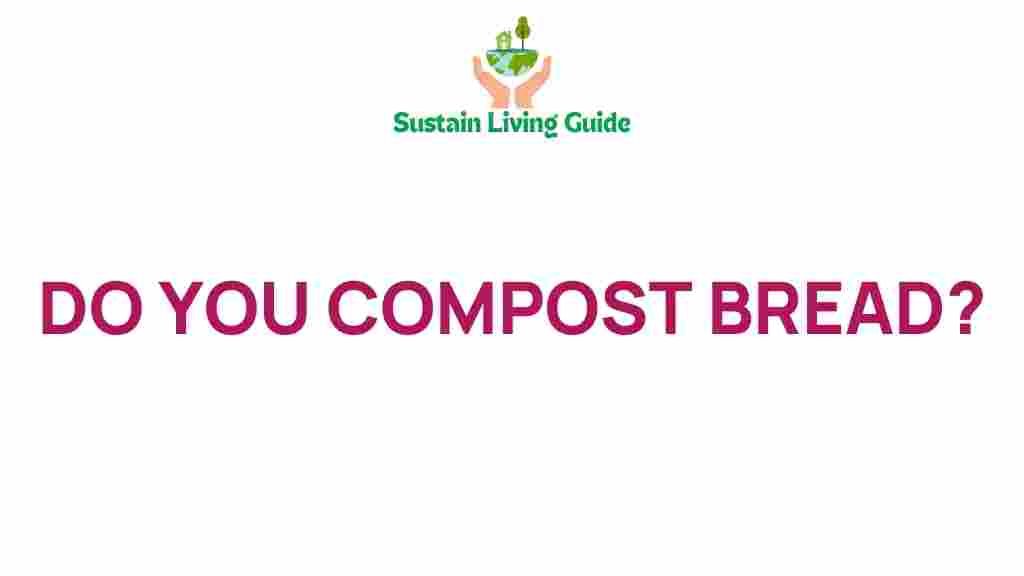Composting: The Surprising Truth About Composting Bread
When it comes to composting, many people are unsure about what can and cannot be added to their compost bins. One common question that arises is, “Can I compost bread?” In this article, we will explore the surprising truth about composting bread, the benefits it offers, and the best practices to follow. Bread is a staple food in many households, but when it goes stale or moldy, it often ends up in the trash. Instead, consider composting bread as a way to reduce waste and enrich your garden.
Understanding Composting
Before diving into the specifics of composting bread, it’s essential to understand the basics of composting. Composting is the natural process of recycling organic matter, such as food scraps and yard waste, into a valuable soil amendment known as compost. This process not only reduces landfill waste but also enhances soil health, promotes plant growth, and supports a sustainable environment.
Why Compost Bread?
Composting bread can be beneficial for several reasons:
- Waste Reduction: By composting bread, you reduce the amount of food waste that ends up in landfills.
- Nutrient-Rich Addition: Bread can add carbon to your compost pile, which is essential for creating a balanced environment for decomposition.
- Encourages Microbial Activity: Bread can help attract beneficial microorganisms that aid in the composting process.
How to Compost Bread Properly
Composting bread is not as straightforward as tossing it into your compost bin. Here’s a step-by-step guide to ensure you do it correctly:
Step 1: Choose the Right Type of Bread
Not all bread is created equal when it comes to composting. Here are some guidelines:
- Whole Grain Bread: This type is generally better for composting due to its natural ingredients.
- Moldy Bread: While some people hesitate to compost moldy bread, it can be beneficial. Mold is a natural part of the decomposition process, and it can help break down the bread more quickly.
- Processed Bread: Bread with preservatives may not break down as efficiently and can introduce chemicals into your compost.
Step 2: Prepare the Bread for Composting
Before adding bread to your compost pile, it’s important to prepare it properly:
- Cut into Small Pieces: Breaking the bread into smaller chunks will help speed up the composting process.
- Avoid Excessive Oils and Condiments: Bread with a lot of butter, oil, or sauces can attract pests and create odors. Stick to plain bread whenever possible.
- Mix with Other Materials: Always combine bread with a mix of green (nitrogen-rich) and brown (carbon-rich) materials to maintain a healthy compost balance.
Step 3: Monitor Your Compost Pile
Once you’ve added bread to your compost bin, monitoring the conditions is crucial:
- Temperature: Ensure that your compost pile maintains a temperature of 130°F to 160°F to promote effective decomposition.
- Moisture Level: Your compost should be damp but not soggy. If it feels dry, add some water; if it’s too wet, add more brown materials.
- Turn the Pile: Regularly turning your compost pile will aerate it and speed up the decomposition process.
Troubleshooting Common Composting Problems
Even with the best practices, composting can sometimes present challenges. Here are some common issues and how to address them:
Problem 1: Bad Odors
If your compost pile emits a foul smell, it might be due to too much food waste or insufficient aeration.
- Solution: Add more brown materials, such as dried leaves or cardboard, and turn the pile to increase airflow.
Problem 2: Pests
Composting bread can attract unwanted pests like rodents or insects.
- Solution: Bury bread deeper in the compost pile and cover it with a layer of brown materials to minimize exposure.
Problem 3: Slow Decomposition
If your compost pile is breaking down slowly, it might lack the right balance of greens and browns.
- Solution: Adjust your compost mix by adding more nitrogen-rich materials, like grass clippings or kitchen scraps.
Best Practices for Composting Bread
To ensure the best results when composting bread, keep these best practices in mind:
- Always aim for a balanced mix of green and brown materials.
- Keep the compost pile moist but not overly wet.
- Regularly turn the compost to aerate it and promote even decomposition.
- Consider using a compost bin with a lid to help control pests and maintain moisture levels.
Conclusion
Composting bread is not only a great way to reduce food waste but also an effective method for enriching your compost pile. By following the guidelines and best practices outlined in this article, you can successfully incorporate bread into your composting routine. Remember that a little preparation and monitoring can go a long way in ensuring a healthy and productive composting process.
If you’re looking for more information on composting and sustainable practices, check out this helpful resource for tips and tricks on how to improve your composting efforts!
By embracing composting, you contribute to a healthier planet while benefiting your garden. So next time you find a loaf of bread that’s past its prime, think twice before tossing it in the trash—your compost bin is waiting!
This article is in the category Waste and created by SustainLivingGuide Team
